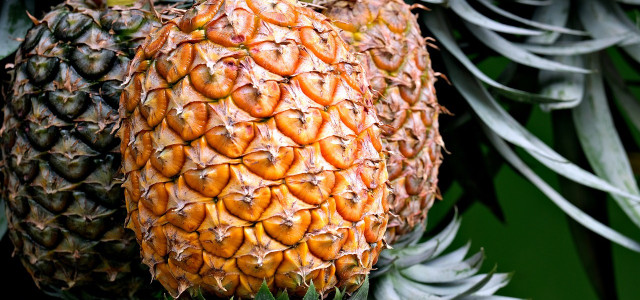Are all those leftover pineapple peels filling up your compost too quickly? Instead of tossing them, put your pineapple peels to use with some unique recipes.
Though they may be one of the last kitchen scraps you would consider eating due to their spiky and fibrous texture, pineapple peels are completely edible and safe to eat. Like banana peels, pineapple peels contain traces of tasty pulp, they are also high in fiber. Like the flesh, pineapple peel also contains bromelain, an enzyme that breaks down protein and may cause your mouth to feel tender as a result. Bromelain has multiple health benefits including being anti-inflammatory, anti-bacterial, antioxidant, and aiding in meat digestion.
Though organic pineapples haven’t been treated with harsh fertilizers or pesticides, you should remember to always wash your pineapple peel carefully before consumption. Unlike orange peels, pineapple peels are not easy to dry and should be used immediately or frozen until use to avoid spoilage. If eating the bark-like peel straight doesn’t appeal to you, consider preparing the peel to extract the flavor in the recipes below.
1. Make Pineapple Tea
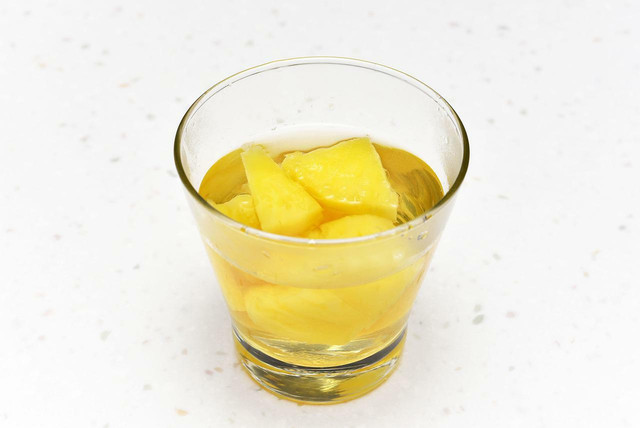
(Foto: CC0 / Pixabay / MYCCF)
Making pineapple peel tea can be both an end goal and a stepping stone to several other pineapple peel uses. Boiling the pineapple peels softens them, extracts juice, and deactivates bromelain for a gentler flavor. Drink pineapple peel tea as is, boil it down for a more concentrated flavor, or cool it down for a refreshing pineapple infused water. If you are brave enough, boiling also softens pineapple peels significantly to eat as they are.
2. Make Pineapple Syrup



(Foto: CC0 / Pixabay / farmerdir)
Take your tea to the next level by concentrating it into a syrup. Simmer the pineapple peels until soft, strain out the liquid, add half a cup of sugar per pineapple, and simmer again until syrupy. Use as a topping for pancakes, add it to sparkling water or club soda for a carbonated pineapple soda, or use in a summer spritz cocktail.
3. Pineapple Pectin
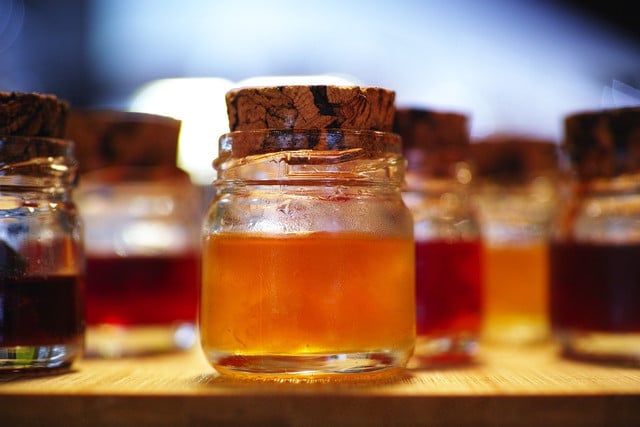


(Foto: CC0 / Pixabay / Engin_Akyurt)
Unlike the flesh, pineapple peel is an excellent source of fruit pectin, the fiber that causes liquid in jelly or jam to gel. Follow the same instructions for making pineapple peel syrup, but don’t add any sugar. Simmer for up to two hours until the peels become mushy. Once strained, the resulting liquid can be further evaporated until it reaches a thicker consistency. This liquid pectin imparts a slight pineapple flavor and sweetness to jams or jellies. For a more concentrated liquid pectin, stockpile leftover pineapple peels and apple cores and peels (also great sources of pectin) and freeze until you have enough for a larger batch.
4. Tenderize Meat



(Foto: CC0 / Pixabay / Goumbik)
Did you know most commercial meat tenderizing powder is derived from pineapples? The pineapple’s enzyme bromelain helps break down proteins and tenderizes meat without the need for a mallet. Blend pineapple peels until a paste is created and then marinate cuts of meat for about 15 minutes. Bromelain works quickly, so check the meat periodically to avoid over-tenderizing.
5. Ferment it
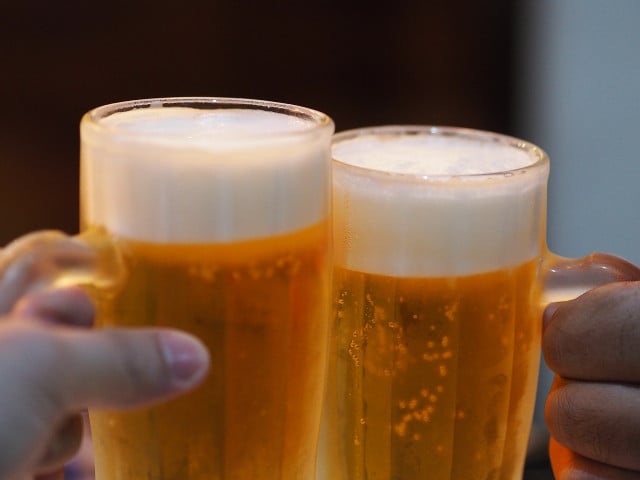


(Foto: CC0 / Pixabay / runextreme)
Pineapple peels can be fermented into a fizzy and lightly boozy beverage known as tepache. Though it was originally produced by the Aztecs using corn, it is now commonly drank in Mexico using pineapple peels and cores. Gather pineapple peels, 5 cups of water, half a cup of brown sugar, and a bit of ginger or cinnamon stick for taste. Combine these ingredients in a glass jug and cover with a towel, cheesecloth, or cheesecloth alternative. Let this mixture ferment for at least one day. Your tepache should be fizzy and slightly vinegary (like kombucha). You can ferment it for longer for a stronger taste, but alcohol content will stay at around 2-4 percent. Drink straight or mix with water to enjoy!
6. Pineapple Face Scrub
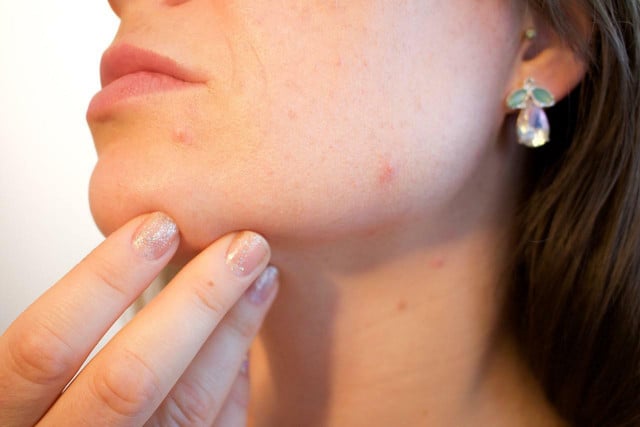


(Foto: CC0 / Pixabay / Kjerstin_Michaela)
The same way pineapple skins can tenderize cuts of meat, they can tenderize your skin as well! The enzyme bromelain is an excellent exfoliator due to its ability to remove dirt, bacteria, and dead skin cells. Simply blend up pineapple peel, add sugar, honey, or coconut oil for texture, and apply to the skin as a mask or scrub. This is also a great way to exfoliate your feet. Test blended pineapple on a small portion your skin first since it can be irritating if left for too long.
Read more:
- Reuse Vegetable Scraps: Skip the Trash and Put Food Back on Your Plate
- 4 Clever Ways to Use Leftover Apple Peels
- Lemon Peel Benefits: Why You Shouldn’t Throw Out the Rind
Do you like this post?






